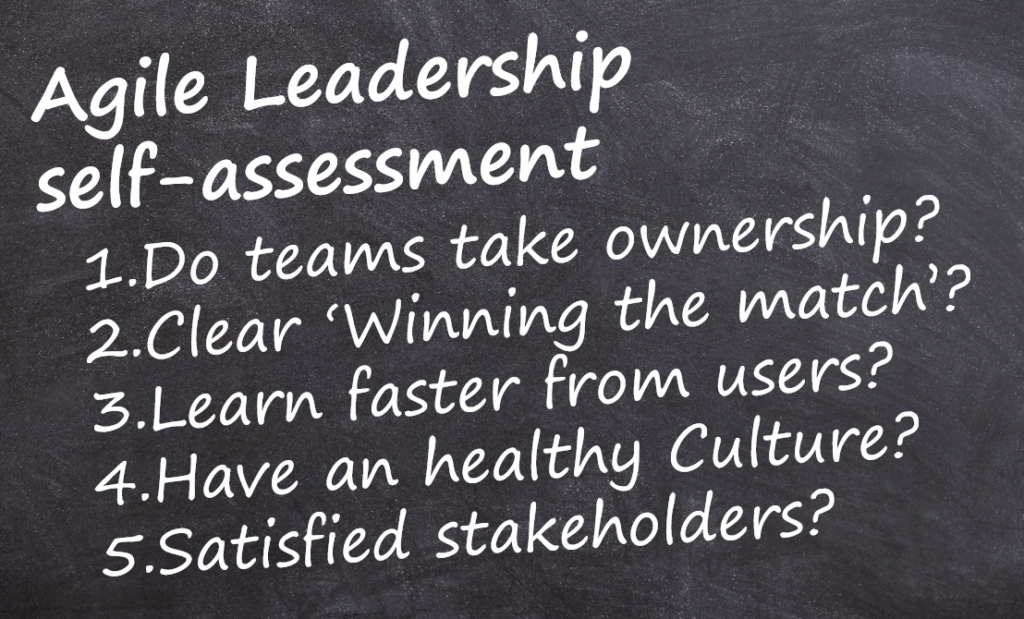
How Can Agile Leaders Create the Right Context for Ownership
Let's unleash the energy

What is Ownership?
When I use the term ownership, I mean that teams pick up ownership voluntarily and take responsibility for the results of a product or service. These teams are proactive and have the passion and energy to really make an impact for the users of their product. They work together, give each other feedback, exhibit resilience, are open minded, and learn continuously. They also help other teams to grow. As entrepreneurs, they take ownership of both the strategy and the way it is implemented. In addition, they realize that they own their own challenges, solutions, and customers. The product or service feels like their own child in a beautiful way. This gives teams pride, creativity, energy, passion, and satisfaction in their work.
Ownership cannot be imposed or enforced. It is the voluntary choice of the team to take ownership because being forced does not coincide with passion, energy, and fun. It must be granted by the leader to give the teams the ability to take ownership. It must of course also be rewarded and sustained.
Why Ownership?
When the work is complex, when teams have to grow continuously, and when employees have to find creative solutions every day to really help customers, something special is needed to be successful. When every situation, challenge, and customer is too unique, people need to be empowered to think and decide for themselves. Ownership ensures that they think outside the box to come up with innovative solutions that really help customers. In case of unexpected problems, difficult challenges, or when things go wrong, ownership ensures that teams feel responsible to solve this. They don’t have to wait for others to come up with solutions. When they feel ownership, they don’t blame others for their challenges. Even when it gets tough, these teams continue to look for solutions and find opportunities. This is crucial because in complex environments, solutions can only be found by exploring and experimenting, learning from failures, and continuously growing as a team. Ownership gives them momentum to overcome unexpected challenges and obstacles.
It’s the agile leader’s job to create an environment in which people and teams grow, work together, laugh, build trust, and feel proud on the things they do for their customers.
How to design the context for ownership?
To give teams the right degree of freedom, the agile leader must know when to intervene and when not to. If he acts too quickly, he gives his team too little freedom, causing them to feel frustrated or thwarted. Teams in these circumstances will not take ownership. If the leader doesn’t intervene, or if he intervenes too late, his team gets too much freedom, resulting in the team feeling lost and confused; they also will not take on ownership.
Whether or not it’s wise to intervene depends on the maturity of the team. A highly mature team can independently organize their work and achieve great results, but a team just starting still needs a lot of help, guidance, and support. If the team is very mature and the agile leader gives little freedom and often intervenes, the team will become frustrated and passive; they will no longer come up with solutions themselves. Good people will leave, and if they don’t they will just passively do what they are told to do. Low quality and high risk will result. The team actually needs more space, and the manager should let go a lot more.
On the other hand, it also does not work if a newly formed team still figuring out how to collaborate (a starting team) gets too much freedom from the manager. The team feels lost; they do not know exactly what they have to do, and they can’t assess the risks themselves. The team itself cannot come up with solutions on their own because they lack sufficient knowledge. This, too, results in good people leaving. The people who stay experience frustration from the lack of clarity, and they slip into passivity, also resulting in low quality and high risk. Although the results are the same, the team needs less space, and the manager must intervene by increasing the borders and offering concrete help.
To know when to let go and when to step in is a daunting challenge. Based purely on signals of passivity, low quality, employees who leave, and lack of improvement, the agile leader can’t know whether intervention or letting go is best; he must first know the maturity of the team to know how much freedom they need in order to take ownership. But the big question is: how do you know the maturity of the team? Can the team members decide that for themselves? How can the manager know for certain? Experience has shown that the answer can only be found by talking about it together. The Ownership Model helps to facilitate this discussion, making it clear whether intervention is necessary or whether to let go is the better option.
Tool 3: Ownership Model

Two Bad Zones
The two bad zones occur when freedom and maturity are not in balance.
- Too much freedom: Chaos. If the team is given more freedom than matches their maturity, they won’t take ownership. They feel lost, and with too many opportunities and uncertainties, they lack the perspective to make effective choices. Because they can’t adequately anticipate the consequences of their choices, it ends up in chaos. As a consequence, they will experience frustration and demotivation. The rest of the company may be exposed to harmful consequences.
- Too little freedom: Captive. If the team is given less freedom than matches their maturity, they will feel captive or imprisoned by their environment. They lack the room for initiative; they will just follow orders and they will be unable to grow as a team and develop their own working methods. As a consequence, they will also experience frustration and demotivation, which may affect the quality of the product or service they deliver and the satisfaction of the customers of those products or services.
Getting started
Having frequent discussions with the teams on how the context and environment feels and whether they take ownership, is a good way to start.






